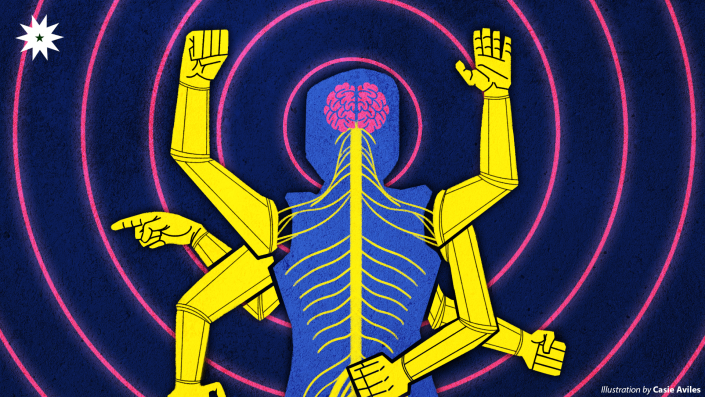
As you are reading this, be it on your smartphone or on a monitor, your hands transmit a constant stream of information about the outside world toward your brain. For most of us, this is how it has always been. But what happens if that stream of information comes to a screeching halt?
Phantom limbs
Losing a limb is a life-changing experience. Aside from not being able to do tasks the way one usually would, sensations of debilitating pain originating from your severed limb may keep you up at night.
Neurologists call this phantom limb syndrome, a condition where amputees can still sense the presence of their severed limb. Once thought of as a psychological issue, further medical research has shown that these sensations are produced by the ongoing activity of the nervous system.
In 2016, ETH Zürich Department of Health Sciences and Technology Professor Dr. Sanne Kikkert and her colleagues at the Hand and Brain Lab at Oxford University mapped the nerve signals of amputees throughout their entire body using ultra-high resolution imaging. They revealed that rather than completely losing the flow of nerve impulses toward the severed limb, the brain somehow retained this continuous flow.
Bruno Herbelin, a researcher at the Ecole Polytechnique Federale de Lausanne in Switzerland, explains that because the brain does not immediately recognize the complete loss of a limb, it does not cease trying to reach the parts of the body that are not there anymore, hence the continuous flow of nerve impulses.
The problem with this is the absence of feedback. “This is what causes neuropathic pain,” says Herbelin, explaining that the neurons that have suddenly been kept in the dark are awaiting a response.
Mind-machine interface
This deprivation of sensory signals from the brain paved the way for neuroscientists and medical engineers to understand how the brain can rewire itself in response to new stimuli. Herbelin likens our brains to plastic as “they can adapt to many things and [to] enormous change.”
Researchers like him postulate that underused connections in the brain start to appear when a limb is lost. Rather than allowing these connections to take over, neuroscientists and medical engineers have developed a neural interface that can tap into the nervous system and reignite the broken line of nerve streams.
Herbelin explains that for a neuroprosthetic limb to function, a neurostimulator is implanted in the target muscle to send electrical stimulation to the brain. Connected to this device are fine, hair-like wires that thread to the nerves that await a signal. With the development of this technology, the question of whether the brain will accept and understand this new signal is raised.
“If you read the electromyography data (electrical activity produced) of the muscle activity, it’s pretty high and clear. What we have simply done is to create a device which can read that activity on [the muscle] and convert it into a tool,” reassures Herbelin. This means that the neuroprosthetic not only allows your brain to receive information, but it also responds the way it naturally would.
Spinal stimulation
Injury to any part of the spinal cord precludes nerve signals from passing through, making it arduous for doctors to cure spinal damage such as lower-limb paralysis, also known as paraplegia. While the neuroprosthetic devices have yielded viable results in recovering sensory feedback in the lower limbs, only animal trials have been conducted.
But with the development of the neuroprosthetic interface, neuroscientists are now working on unveiling augmentations to neuroprosthesis in hopes of enabling people with paraplegia to walk again.
Herbelin explains that, unlike the neuroprosthetic limb, neurostimulators are implanted at any specific region of the spinal cord which is responsible for a certain action. In 2018, clinical trials were conducted on three paraplegic men by treating their spinal cord via electrical stimulation combined with physical therapy. This yielded positive results, allowing them some level of autonomy.
Transcending boundaries
There will always be risks and hurdles when opening new doors to push past the boundaries of human capabilities. Considering how vast the field of Neuroscience is, it is not surprising that neuroprosthetics and its adjacent methods are still climbing their way to the top.
Nevertheless, the accomplishments of the scientists and engineers behind these developments are indeed transforming the industry. This new wave of innovation only intensifies as scientists and engineers continue to bring the wonders of science fiction into reality.
